The problem with to-do lists is that they cover everything, up to – and sometimes including – the kitchen sink.
There are the things you have to do (file your taxes, pay your rent, fix the aforementioned sink); the things you really should do (email your boss back, send Grandma a birthday card, get your flu shot); and, finally, the things you actually want to do (graduate college, buy a house, start a business).
Oftentimes, our to-do lists and our lives get so overrun with the first two types of tasks that we lose sight of the third.
As we start turning our attention to New Year’s resolutions for 2024, we wanted to share some of the creative ways the Todoist community keeps their goals top of mind all year round. Steal one or several of these strategies for setting, tracking, and achieving your own goals in the year to come.
1. Create a high-level “Goal Tracker” project
This project isn’t for tasks you’ll check off. At least not right away. Instead, it’s a high-level list you can refer to again and again. Think of it as your North Star, guiding your daily decisions about what to prioritize. Balance out your life with sections for each area you want to focus on.
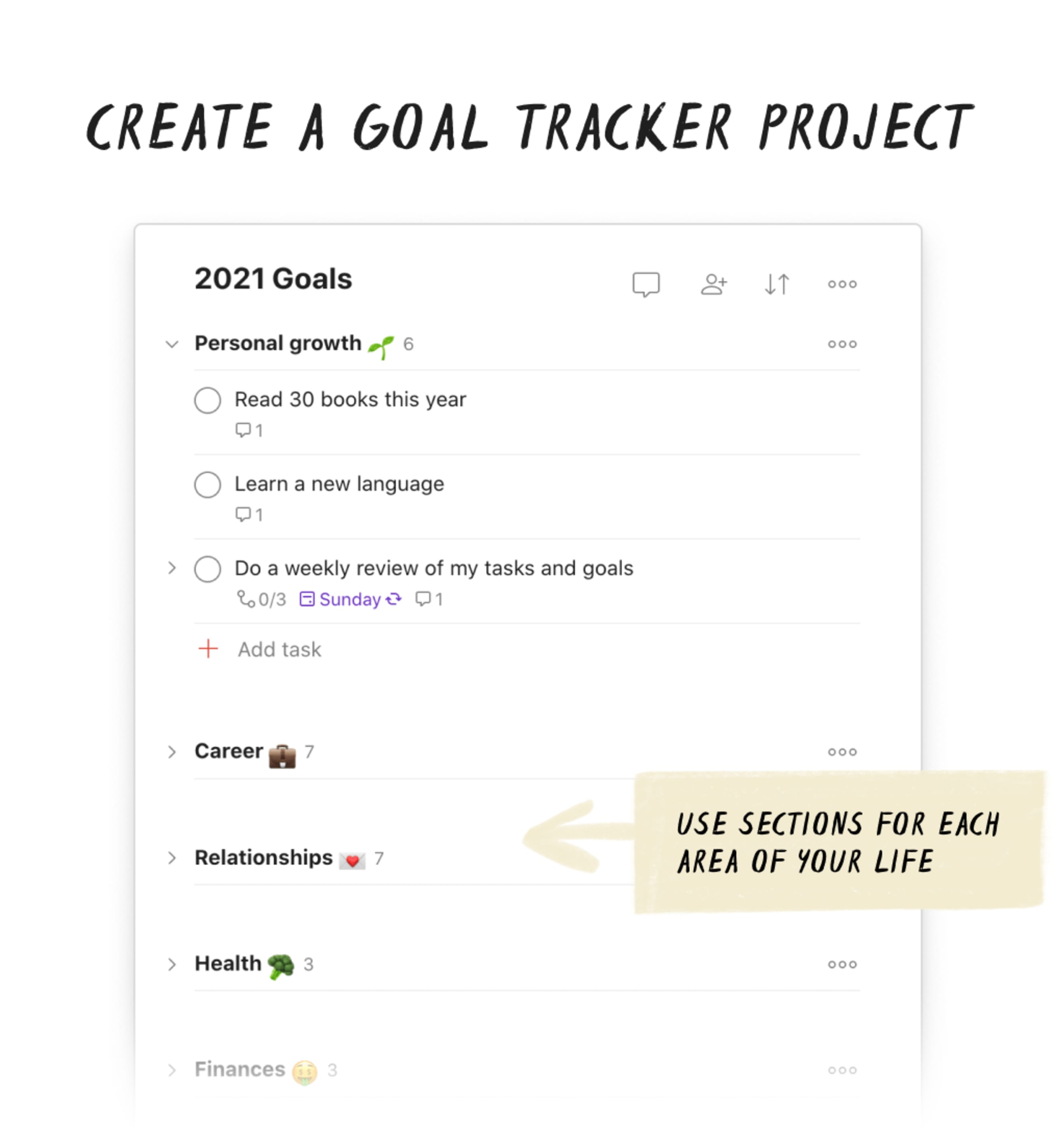
Artist and therapist Kane Dodgeson uses a Kanban-style board project to focus on the goals that are his priority right now while keeping track of goals he wants to work toward in the future.
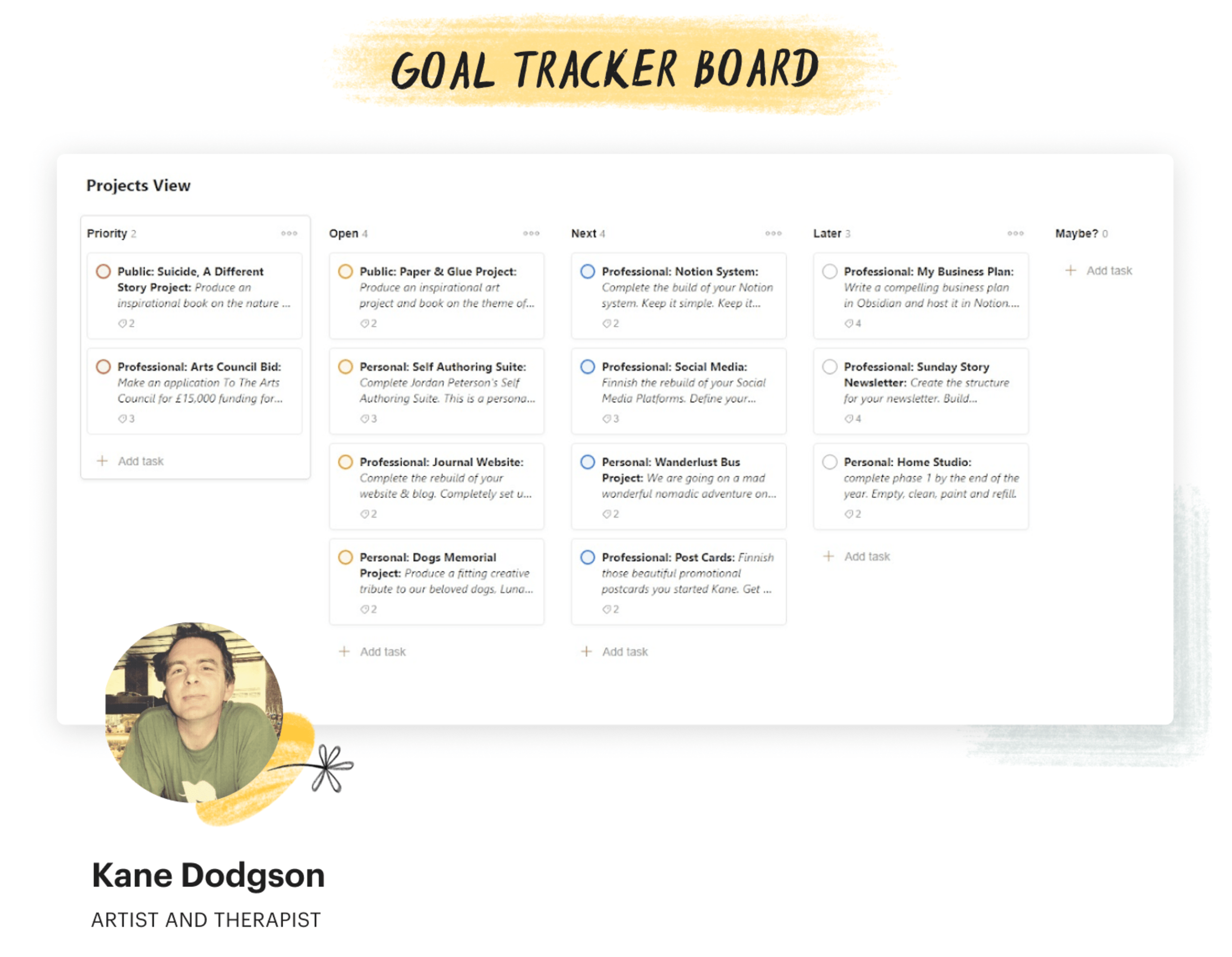
Add your Goal Tracker project to favorites as an easy-to-access reminder of what you’re working toward.
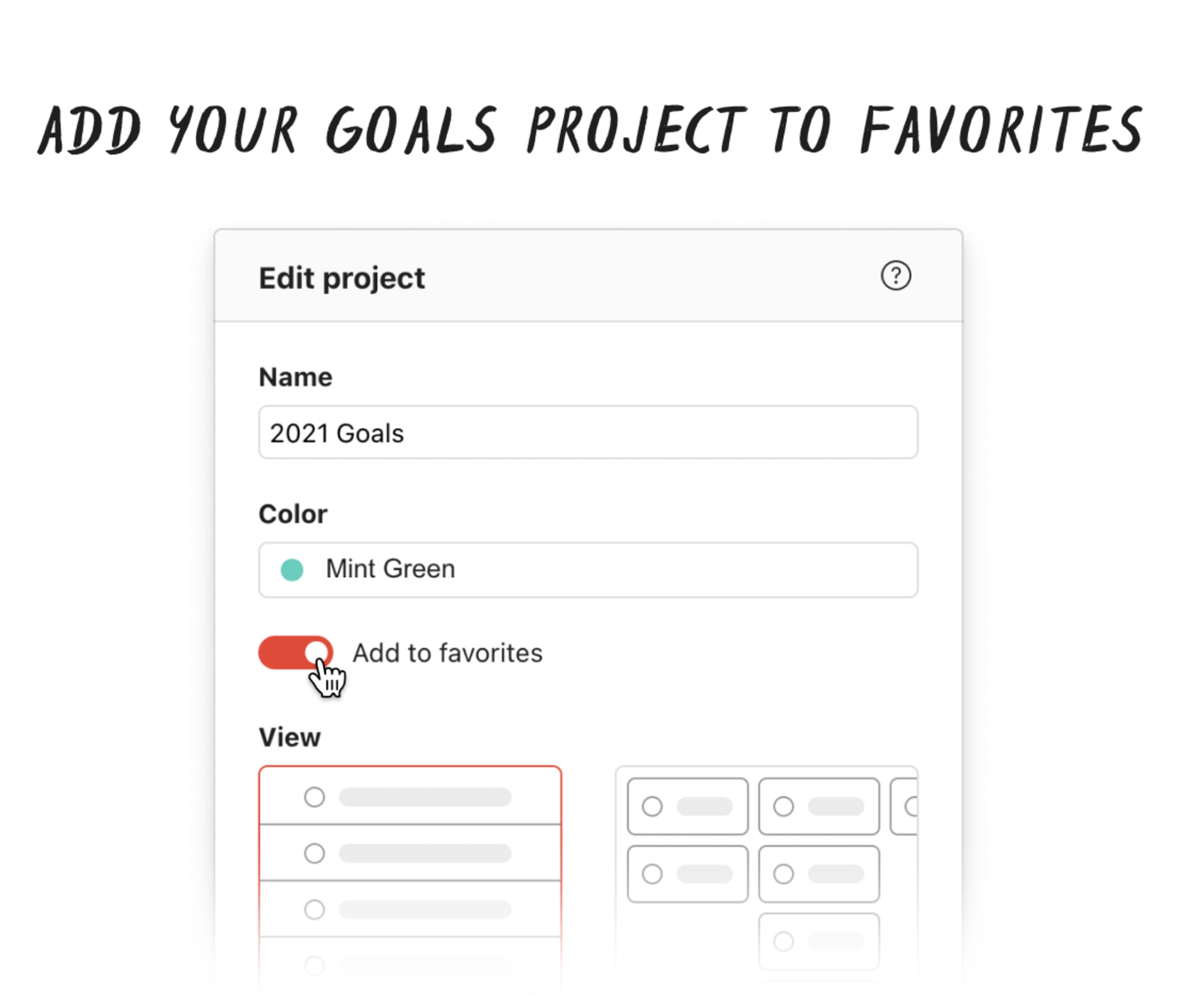
2. For big goals, create a new project for each one
Some goals are so big and complex, it’s hard to know where to start: Renovating a home, launching a business, remembering to send people birthday cards. For these kinds of goals, create a project for each one and break it down into small steps.
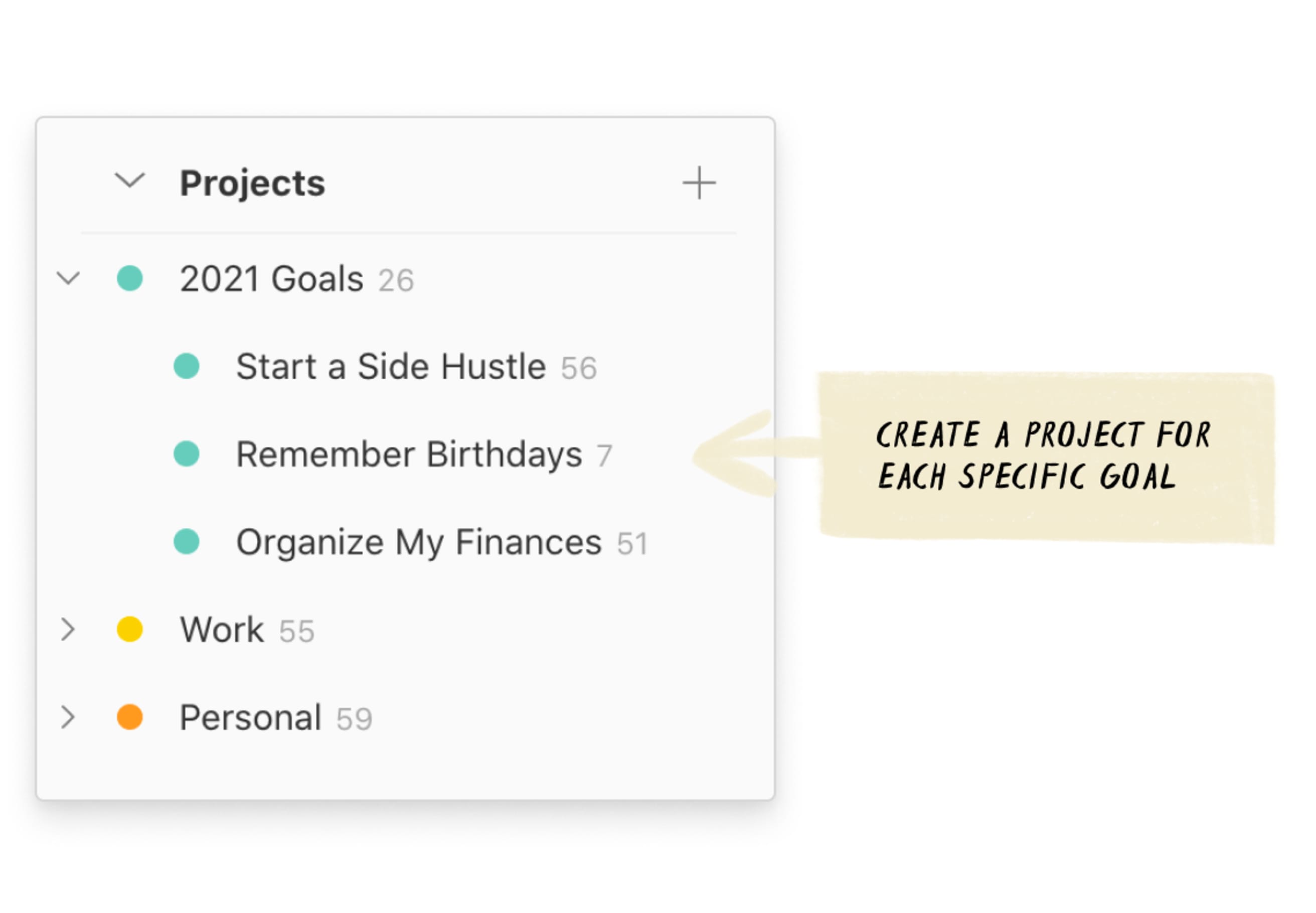
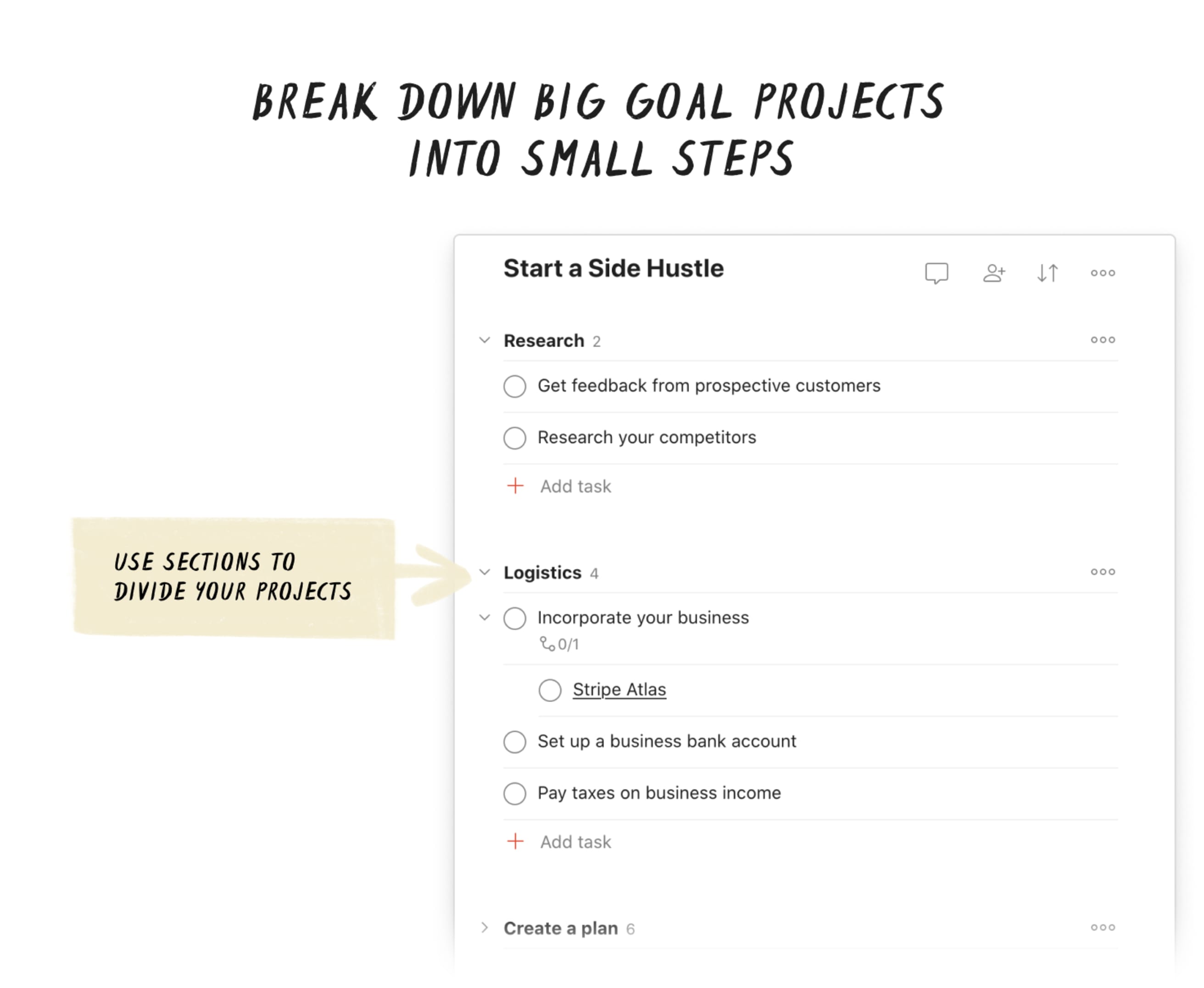
Software engineer Samantha Houston used this strategy to become the first person in her family to obtain a bachelor’s degree. While still in high school, she started a “College” project to keep track of everything from application deadlines to financial aid forms to classroom assignments.
3. Create a filter view to focus on just your goal tasks
Even with dedicated projects, it’s easy to put off the important tasks that bring you closer to your long-term goals when there are so many more urgent things clamoring for your attention. Focus on what’s most important with a filter view that shows you just the tasks due today in your goal projects. Spend your time and energy on these tasks first.

Again, you can add this filter view to favorites so that it shows up right under your Today and Upcoming views.
4. For building better habits, set recurring due dates
Not every goal is a grand, multi-step scheme. Some goals are small, consistent habits built over long periods of time – making your bed every morning, reading 20 pages every day, setting aside one hour every day for learning.
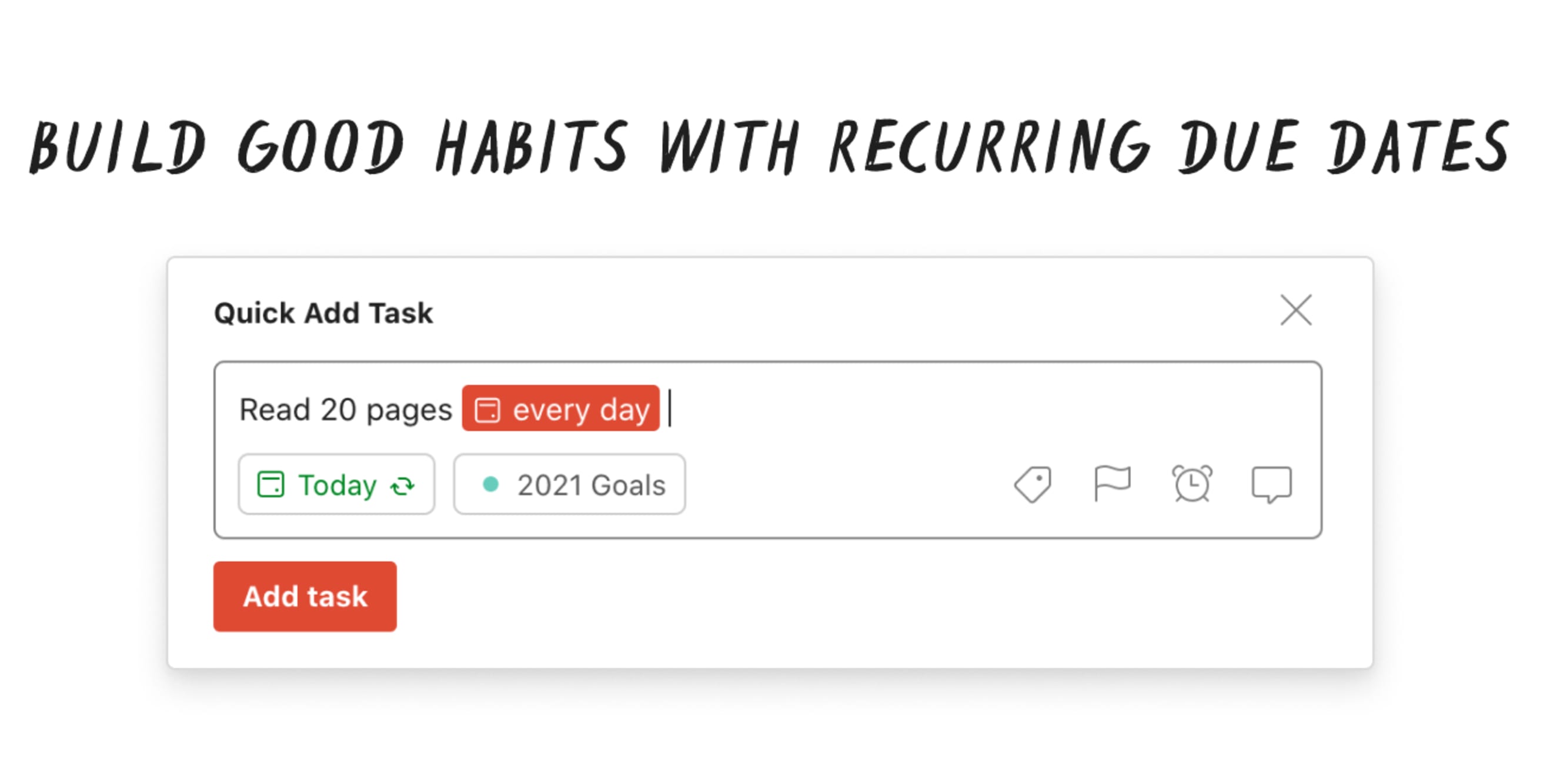
To keep track of these types of goals, create tasks with a recurring due date like “every day”, “every week”, or “every month”. When you complete the task, it will automatically reset for the next due date so you won’t forget about it.
5. For long-term goals and guiding principles, create a recurring reminder
Real estate investor and entrepreneur Kreigh uses recurring due dates to keep track of his goals in a slightly different way. At 32, he has a list of long-term goals he wants to achieve by the time he turns 35. He keeps a list of those goals in a task scheduled for every morning at 7am so he sees it before doing anything else:
It clears the dust out of my mind on why I'm about to do what I do.
A daily morning reminder task is also a great way to keep yearly themes, personal missions, or core values top of mind. These types of guiding principles are fuzzier than goals but can be a powerful way to nudge your days – and, by extension, your life – in the direction you want them to go.
6. Take stock of your progress & plan next steps in a weekly goal review
All too often goal-setting becomes a set-it-and-forget-it exercise. We’re excited about our resolutions on January 1st, but soon we slip up or we get bored or circumstances change (like, I don’t know, say a global pandemic?!). Instead of reflecting and adjusting our goals as we go, we start avoiding them altogether.
This year, keep your goals relevant to your life with a weekly goal review. Create a recurring weekly task – say every Sunday – to review your goals, assess progress and/or setbacks, and make a plan for how you’ll move forward in the week to come.
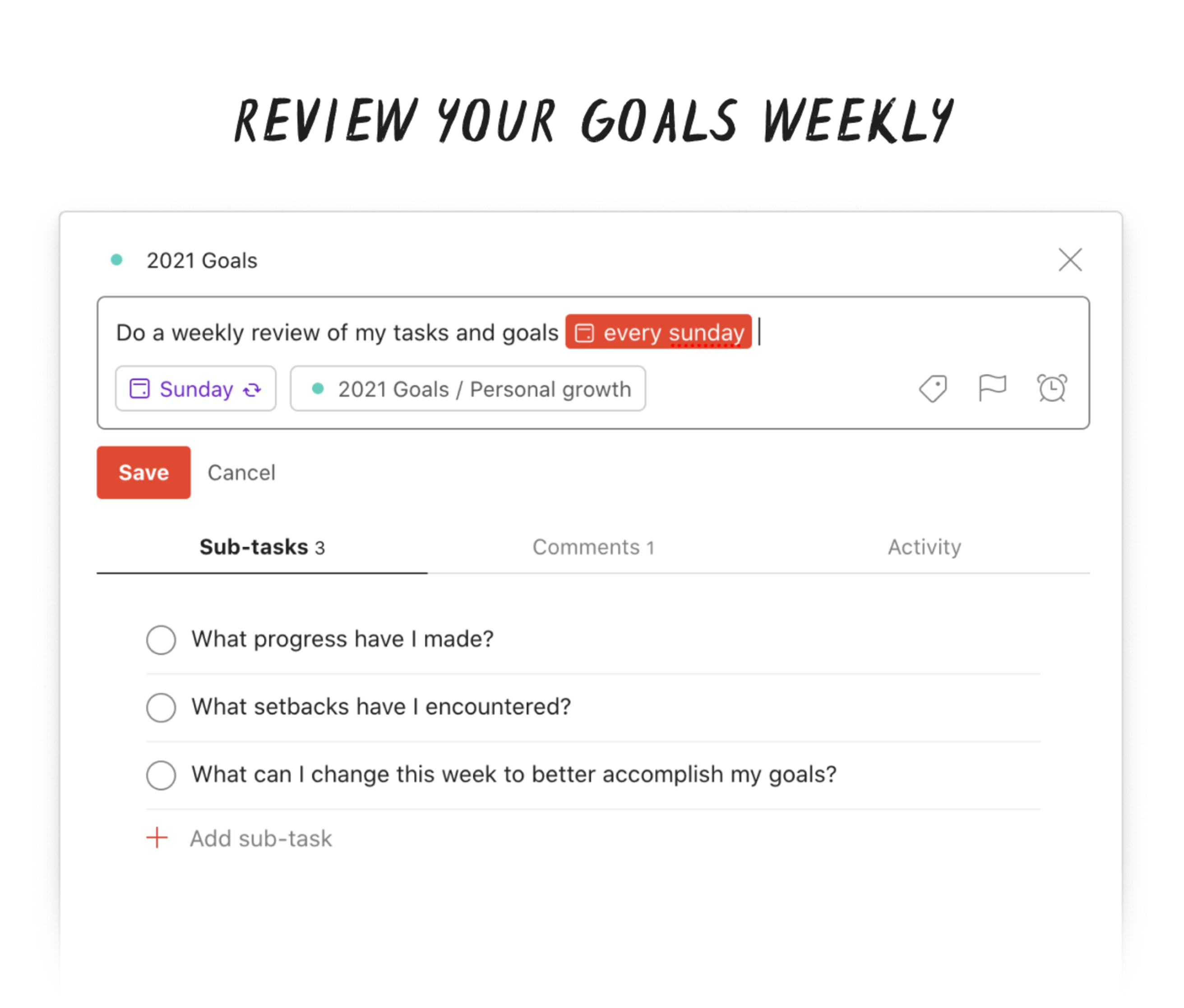
7. Keep an “Avoid at All Costs” list for goals you aren’t working toward right now
Goal-setting is also a process of deciding what not to focus on. It’s often our second-tier goals – the things we could maybe work on if we have the time – that distract us from achieving our primary goals.
Warren Buffet calls these second-tier goals your Avoid at All Costs List:
No matter what, these things get no attention from you until you’ve succeeded with your top 5.
Employ Warren Buffet’s Two-List Strategy and keep a project called “Avoid At All Costs” for all the things you’d like to accomplish in the future, but aren’t top priority right now. Less dramatic to-do listers might call this a “Maybe Later” project.
I wish I could say Todoist makes it easy to reach your goals, but that’d be a lie. Any goal worth achieving will require a lot of hard work and at least a little sacrifice. What Todoist can do is help you plot out your goals and keep them top of mind as you decide where to spend your finite time and attention, in 2024 and beyond.

